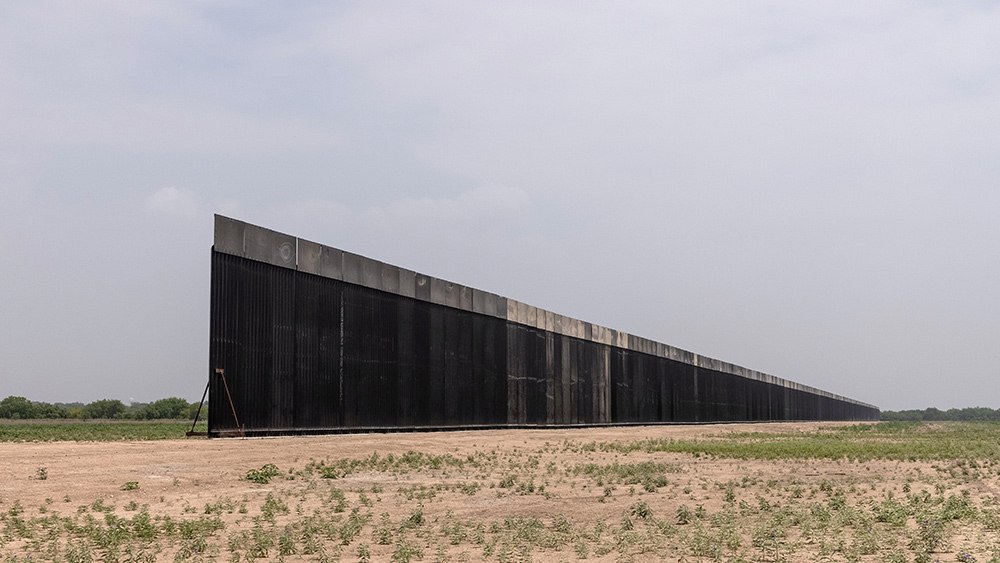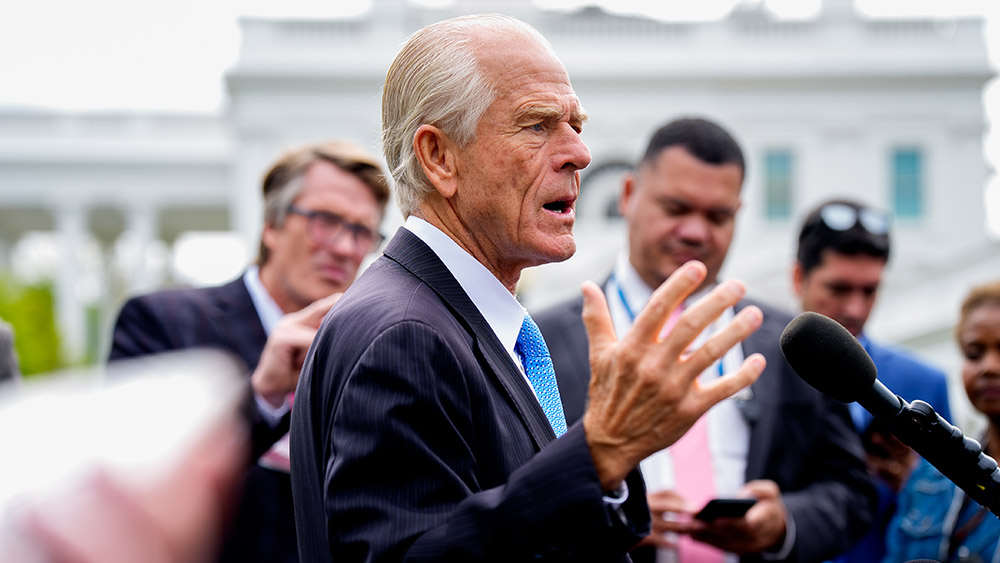 Parler
Parler Gab
Gab
- House Republicans introduced a major budget proposal on April 27, focusing on expanded physical barriers, surveillance technology and staffing to secure borders ahead of the 2026 World Cup and 2028 Olympics.
- The bill uses budget reconciliation to bypass Senate filibusters, requiring only a simple majority. Key allocations include $46.5 billion for a barrier system with drones and sensors and $5 billion for CBP personnel and facilities.
- While maintaining Trump’s wall as a symbol, the plan prioritizes biometric tracking ($673M), drug interdiction ($500M) and event-specific security funding ($1.6B combined for Olympics/World Cup).
- GOP links the bill to Trump-era tax cuts and border enforcement successes, while critics argue the spending is excessive amid declining illegal crossings. DHS warns underfunding could reverse progress.
- The package revives Trump’s 2017 wall vision but adapts with tech and staffing solutions. It faces Democratic resistance and legal hurdles but aims to solidify GOP priorities on immigration and economic policy.
Legislative strategy: Reconciliation and a path to swift action
The $68.8 billion budget — and accompanying tax proposals — is designed to exploit reconciliation procedures, requiring only a simple Senate majority for passage. This streamlined process shields the package from Democratic filibusters, a critical tactic for a GOP-led Congress. At its core lies $46.5 billion allocated to an integrated “border barrier system,” combining physical fencing with advanced technology like drones, ground sensors and radar. The package also directs $5 billion toward Customs and Border Protection(CBP) facilities and personnel, $2 billion for retention bonuses to address staffing gaps and $1.1 billion to modernize CBP’s aging vehicle fleet. DHS officials framed the urgency in stark terms, with a memo warning Congress that failure to approve the plan would “undo all the Trump administration’s massive successes.” The administration points to recent declines in apprehensions along the southern border as evidence of progress under current policies but stresses that systemic investments are needed to sustain results. “This isn’t just about walls anymore—it’s about having the tools to keep up with a shifting threat landscape,” a senior DHS official told reporters. The broader budget agenda extends beyond security. It includes permanent extensions of the 2017 Trump-era tax cuts, fulfilling campaign promises to exempt tips, overtime pay and Social Security benefits from taxation. Combined, these elements frame the bill as a comprehensive GOP agenda, linking economic priorities to national safety.Modernizing the border: From walls to biometrics
While the border wall remains a symbolic centerpiece — legacy of the 2016 campaign — the 2025 plan deploys technology to complement physical infrastructure. The 2.7 billion allocated for surveillance includes aerial drones, remote sensors and next−generation radar networks aimed at detecting and tracking illicit movements. Additionally, 673 million would enhance a biometric tracking system to monitor illegal migrants throughout the U.S., a nod to concerns about overstayed visas and repeat crossers. The funding includes $500 million to combat drug trafficking by Mexican cartels, and for regional cooperation and criminal interdiction. A portion of the budget — $1 billion for the 2028 Olympics and $625 million for the World Cup — highlights how domestic security intersects with global visibility. “These events are not just showcases for America; they’re potential vulnerabilities,” said Texas Republican Mark Green, chair of the House Homeland Security Committee. “We need to ensure our borders are secure to protect both our citizens and international guests.”Historical context: From Trump’s wall to today’s challenges
The 2025 plan builds directly on former President Trump’s 2017 wall proposal in both rhetoric and strategy. While that initiative faced legal and funding hurdles, the current GOP framework merges physical barriers with adaptive technology, reflecting lessons from past operational failures. For instance, the emphasis on retention bonuses addresses chronic staffing shortages at CBP, which saw attrition rates rise under the Biden administration due to stressful field conditions. Critics, however, maintain that border security has shifted amid demographic and migratory changes. While apprehensions of Central American families surged post-Biden, flows have since declined under Trump’s stricter enforcement policies. Some lawmakers argue the $68.8 billion overreach is unnecessary given reduced pressures. “This isn’t just about funding; it’s about balanced priorities,” said Texas Democratic Rep. Henry Cuellar, who recently praised Trump’s approach in a media interview but criticized his party’s handling of gang-member asylum cases.Stakes of the 2025 budget
The House Republican package represents both a policy pivot and a political gamble. By tying border security to global events and tax reforms, GOP leaders aim to frame the agenda as essential to American sovereignty and economic vitality. The reconciliation path ensures control over the timeline, but the legislation faces Democratic opposition and potential legal challenges. For the Trump administration, the budget is a high-stakes endeavor to solidify its legacy on immigration, mirroring the ambitious 2017 proposals. The stakes extend beyond partisan lines: as DHS warns, the consequences of inadequate funding could reverberate as U.S. prepares to host millions for the Olympics and World Cup. As the debate unfolds, the nation’s borders remain at the crossroads of national security, global diplomacy and domestic politics. Sources for this article include: YourNews.com FoxNews.com NewsMax.comD.C. Circuit upholds Trump’s Voice of America overhaul in bipartisan show of executive power
By Willow Tohi // Share
U.S. withdraws as mediator in Ukraine-Russia war
By Ava Grace // Share
Trump signs executive order defunding NPR and PBS
By Laura Harris // Share
Greene’s firebrand critique: War, Ukraine deal and a GOP base in turmoil
By Willow Tohi // Share
“Wartime Homefront Essential Skills” on BrightU: How roadkill can become survival gold when SHTF
By Jacob Thomas // Share
Newly released emails expose Biden DOJ’s targeting of Peter Navarro
By Ramon Tomey // Share
Governments continue to obscure COVID-19 vaccine data amid rising concerns over excess deaths
By patricklewis // Share
Tech giant Microsoft backs EXTINCTION with its support of carbon capture programs
By ramontomeydw // Share
Germany to resume arms exports to Israel despite repeated ceasefire violations
By isabelle // Share










